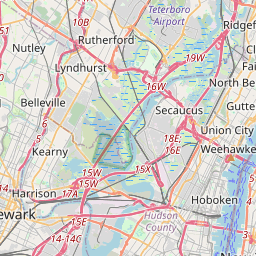Inscription
Thomas Paine Park
Abraham De Peyster StatueThomas Paine Park
This impressive bronze statue, created by American sculptor George Edwin Bissell (1839-1920), depicts mayor Abraham De Peyster (1657-1728). Born in New Amsterdam (now known as "Manhattan"), De Peyster came from a prosperous mercantile family. In his youth he spent nine years working on the family farm in the Netherlands, before returning in 1684 to New Amsterdam. He quickly ascended the city's political ladder, occupying almost all of the important colonial offices, including alderman, mayor, member of the King's Council, and acting governor. De Peyster amassed great wealth, and by the end of his life is said to have been one of the city's wealthiest merchants.
In the late 19th century, John Watts De Peyster, Abraham's great-great-great grandson, commissioned this statue. Bissell, whose family ran a marble company in Poughkeepsie, New York, sculpted the piece in his studio in Mount Vernon, New York, and cast the bronze at the E. Gruet foundry in Paris. He also sculpted the portrait of President Chester A. Arthur (1898) located in Madison Square Park, as well as that of John Watts in Trinity Church Cemetery. He depicted De Peyster, spotting a lavish cloak, army boots, and sword in hand denoting his political and military roles in the colonial government.
The
De Peyster sculpture was originally placed in the center of nearby Bowling Green Park in 1896 at a site once occupied by a state of King George III. Vandalism of the statue required replication of a bronze tassel in 1912, prompted the resetting of the sword in 1939, and an overall conservation effort in 1942. In 1972, park and subway renovations at Bowling Green forced removal of the statue. It was relocated four years later on a new pink granite pedestal (on which the original inscription was transcribed) in Hanover Square. In 1999, the statue was conserved by Parks' Citywide Monuments Conservation program, a public-private initiative, which removed advanced corrosion, repatined the bronze surface and applied protective coverings.
The World Trade Center attacks of September 11, 2001 again brought about the displacement of the de (sic) Peyster sculpture, when in 2003 Hanover Square was redesigned and dedicated to the memory of British victims on 9/11. After a prolonged search for a new home in Lower Manhattan, city officials selected a recessed niche in the northern pathway of Thomas Paine Park, as an appropriate location for De Peyster—resonant in historical associations from early Dutch settlement to later immigrant arrivals. The sculpture was reinstalled there in December 2013, and a bronze marker set in the pavement to identify the subject and artist. On July
3, 2014, the 357th anniversary of de Peyster's baptism, the sculpture was rededicated in the presence of more than two dozen of de Peyster's descendants, city officials, and the Netherlands Consul General.
Details
| HM Number | HM2DJI |
|---|---|
| Tags | |
| Marker Condition | No reports yet |
| Date Added | Monday, January 14th, 2019 at 7:03pm PST -08:00 |
Pictures
Locationbig map






| UTM (WGS84 Datum) | 18T E 584222 N 4507631 |
|---|---|
| Decimal Degrees | 40.71530000, -74.00285000 |
| Degrees and Decimal Minutes | N 40° 42.918', W 74° 0.171' |
| Degrees, Minutes and Seconds | 40° 42' 55.08" N, 74° 0' 10.26" W |
| Driving Directions | Google Maps |
| Area Code(s) | 212, 646, 914, 917, 516, |
| Which side of the road? | Marker is on the right when traveling North |
| Closest Postal Address | At or near 126 Avenue of the Strongest, New York NY 10013, US |
| Alternative Maps | Google Maps, MapQuest, Bing Maps, Yahoo Maps, MSR Maps, OpenCycleMap, MyTopo Maps, OpenStreetMap |
Is this marker missing? Are the coordinates wrong? Do you have additional information that you would like to share with us? If so, check in.
Nearby Markersshow on map
Show me all markers in: New York, NY | New York County | 10013 | New York | United States of America
Maintenance Issues
- Is this marker part of a series?
- What historical period does the marker represent?
- What historical place does the marker represent?
- What type of marker is it?
- What class is the marker?
- What style is the marker?
- Does the marker have a number?
- What year was the marker erected?
- Who or what organization placed the marker?
- This marker needs at least one picture.
- Can this marker be seen from the road?
- Is the marker in the median?

Comments 0 comments